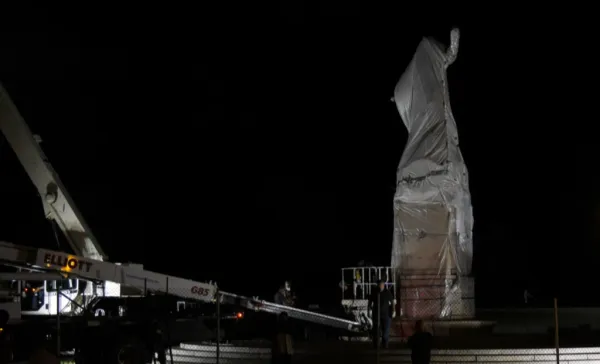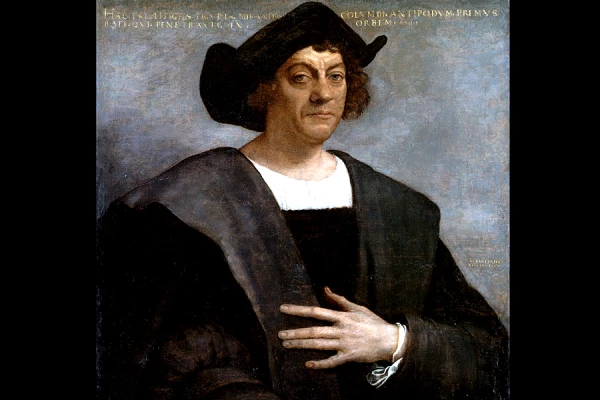
Denver Newsroom, Jul 23, 2020 / 04:43 pm (CNA).- Susana Diaz gets a kick out of watching couples’ faces during their first marriage preparation class.
Diaz, who is the manager of marriage ministries for the Archdiocese of Miami, said she likes watching people realize they will be talking about sex, in intimate detail, in a church setting.
“Most of the time that is the first moment that they realize what NFP is, or that the Catholic Church is talking about sex. Some of them, they’re in shock. So yeah, being in that class, it’s hilarious. Seeing their faces is fun,” Diaz told CNA.
Natural Family Planning, or NFP, is the term for a variety of methods by which married couples can chart their fertility to plan and space children according to Church teaching.
Learning a method of NFP is a standard requirement of marriage preparation in most Catholic dioceses throughout the country, and many couples are exposed to the concept of NFP for the first time during marriage preparation. Still, most dioceses find themselves playing catch-up when it comes to having Spanish NFP resources proportional to their Hispanic populations.
And because the topic of NFP can be so intimate and awkward, it is all the more important that it is being presented in a person’s native language, Diaz said.
“They feel more comfortable in Spanish because it’s a new topic. Even if they speak English and they’re receiving the (marriage preparation) class in English, when they need to talk specifically about sexuality, about NFP, they feel more comfortable in their first language, Spanish. And that’s why we’ve always given them that option,” Diaz said.
In recent years the Archdiocese of Miami has worked to ramp up their NFP resources available in Spanish, due to their large Hispanic population.
“We have Cubans, Venezuelans. We have a lot of Nicaraguans too,” Diaz said. In some parishes in the archdiocese, the number of Spanish Masses offered outnumbers the English Masses. All major events and Masses of the Archdiocese are celebrated in English, Spanish and Haitian Creole, and Archbishop Thomas Wenski is fluent in these three languages, Diaz added.
In the Archdiocese of Denver, Hispanics make up more than 50% of Catholics. But Spanish NFP resources, particularly Spanish-speaking instructors, can be difficult to find.
“Part of the battle is finding individuals who are interested in teaching,” Carrie Keating, NFP and Marriage Specialist for the Archdiocese of Denver, told CNA.
“And especially if it’s a method that we don’t have a lot of experience with in our diocese, it makes it even harder because you’re trying to recruit someone who’s bilingual or Spanish speaking that actually knows the method that we haven’t even had taught here.”
The Archdiocese of Denver does not have any Spanish speakers available for the Billings Method or the Marquette Method of NFP, Keating said, but they have at least one Spanish-speaking instructor for the Creighton Method and 10 couples teaching the sympto-thermal method through the Couple-to-Couple League.
Keating said she was also recently approached by a Spanish-speaking woman who wants to teach the Family of the Americas method in Spanish in the archdiocese, and they are working with her to make that method available.
Besides language barriers, learning NFP can be either cost- or time- prohibitive for some working Hispanic couples, Keating said, and the Family of the Americas method will be more cost-effective and less time-prohibitive than some of the other methods.
Alejandra Bravo, the associate director for Hispanic evangelization at the Archdiocese of Denver, told CNA that she is working to provide more NFP resources in Spanish because she believes it “makes more sense” for people to learn the methods in their native language.
“I remember I was taking the classes five years ago with my husband, and we both speak English, but we feel comfortable in Spanish because that’s the way we communicate at home. And that’s the way we talk about topics that are important to us,” Bravo said.
“So it is definitely something that we are working on, it is one of our priorities,” she said.
The Diocese of Phoenix is another diocese with a significant Hispanic population – roughly 70% of the 1.2 million Catholics in the diocese speak Spanish.
Ana Luisa Martinez de Carillo is the facilitator of programs in Spanish in the Office of Natural Family Planning for the diocese.
Martinez de Carillo told CNA that the Diocese of Phoenix has 16 Spanish-speaking NFP instructors who teach the Family of the Americas method.
While Spanish instruction in various NFP methods can be found online, Martinez de Carillo said it is helpful to have instructors in the diocese who can provide “personalized follow-ups with each couple, and sometimes more follow ups are needed for the couples to feel confident in using the method. Our instructors walk with them, supporting them, answering questions, and also referring them to seek further medical attention if they detect a problem or the clients inquire about it.”
The Diocese of Phoenix is also working with the St. Augustine Foundation to develop a free video series in Spanish about fertility and Natural Family Planning for married couples.
Martinez de Carillo said that while she would like to bring even more methods of NFP in Spanish to the Diocese of Phoenix, she is proud of what they already have to offer couples.
“It is a reality that we can do more for our Spanish speaking community and offer them more resources, like offer more NFP methods in Spanish, but right now we feel confident that [with] the number of classes we offer with the [Family of the Americas] method, we are serving our Spanish-speaking community greatly,” she said.
There are some specific advantages and unique challenges to teaching NFP to Hispanic populations, some instructors told CNA.
Guadalupe Carral, who teaches the Creighton method of NFP in the Archdiocese of Miami, said that because NFP impacts so many aspects of a couple’s life, it is best if couples learn the methods in their native language.
“This is so personal. I mean, human sexuality involves so many things. It’s something spiritual, physical, intellectual, communicative, emotional. So being able to express yourself in your mother language, I think it’s definitely a difference,” Carral said. “There’s a lot of different feelings and thoughts that are related to couples that decide to do NFP that I definitely feel like it’s important for them to feel comfortable to express all that they want to communicate with a person that’s going to completely understand that.”
Carral first learned about the Creighton method of NFP through a friend, and she became an instructor in the method because of her passion for helping couples who are experiencing infertility. She said once Hispanic couples decide that they are going to really practice their Catholic faith – a faith they typically inherit from their families – they are open to learning and practicing NFP in their lives.
“When they want to go down to their roots and live their faith well and do what God asks us to do, I think that they’re very open to NFP, especially when they listen to the success rates [of NFP],” she said.
Carmen Santamaria, another bilingual NFP instructor in the Archdiocese of Miami, first learned about Natural Family Planning during marriage preparation classes. At the time, the Archdiocese was recruiting instructors, and Santamaria believed so strongly in what NFP could do for married couples, that she and her husband became certified teachers in both English and Spanish.
Santamaria said she has been involved in efforts to improve the Spanish NFP resources for the Couple-to-Couple League in the past few years so that they speak more directly to Hispanic populations. The league’s sympto-thermal method has always been taught in Spanish, she noted, but updated materials were necessary.
“Unfortunately, sometimes Spanish language programs in the Church tend to be just translations of American or English programs,” she said. “And that’s fine, they can meet a need. However, it doesn’t necessarily speak to the reality of the Hispanic population or, it’s not necessarily where they’re at.”
Santamaria, who is Cuban American, said the Hispanic population in the Miami area “runs the gamut” of cultures and socioeconomic statuses, from “migrant workers to professionals.”
With the help of technology and Hispanic instructors, Santamaria said they were able to create NFP resources that represented a variety of Hispanic cultures.
Another challenge to teaching NFP to Hispanic populations can be the cultural taboos surrounding topics of sexuality and the nitty-gritty of fertility, instructors told CNA.
“There is the taboo that exists in Hispanic cultures around sex. It is something that it is hard to talk about because there is no sex education or too little in Hispanic cultures. You can see how the couples open up once you start talking about sex with them, the call for marriage that God has, and when you also even joke around it, this relaxes them and you can see how they open up,” Martinez de Carillo said.
Santamaria said she has also noticed an initial discomfort in talking about fertility in the couples she instructs, but she said the courses can be especially eye-opening for men, and that the communication involved in the methods ultimately strengthens marriages.
“Obviously NFP is really focusing on the woman’s fertility, and the man has to learn these things,” Santamaria said. “And I think that it can really strengthen a relationship, especially a marriage, because…it makes the men change their focus.”
There is also another challenge facing anyone teaching NFP to any population, Diaz said, which is convincing couples that they do not have to use contraception to plan and space their children and families.
“We always have the same challenge no matter if the message is for the Anglo or Latino community; this is to provide the message of a unique natural method, approved by God and the Catholic Church, and healthy for a woman’s body, to achieve or avoid pregnancy.”
 […]
[…]





